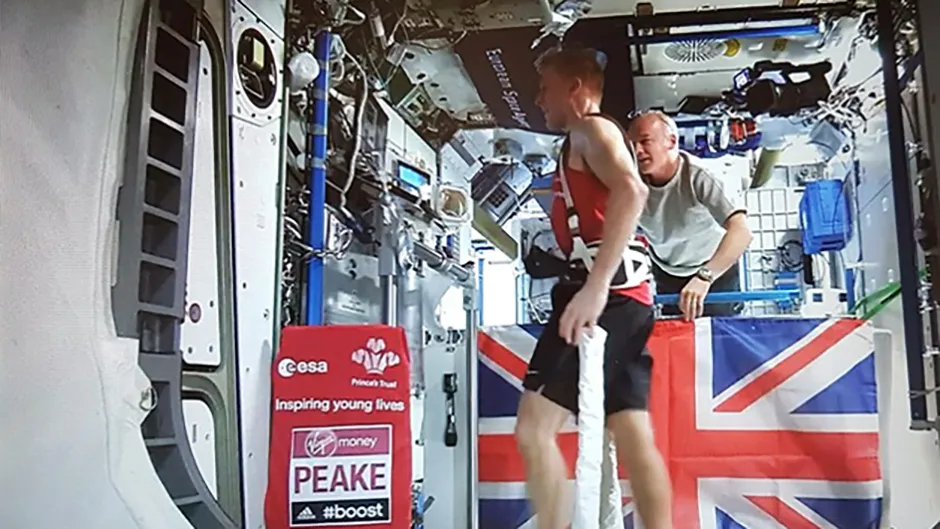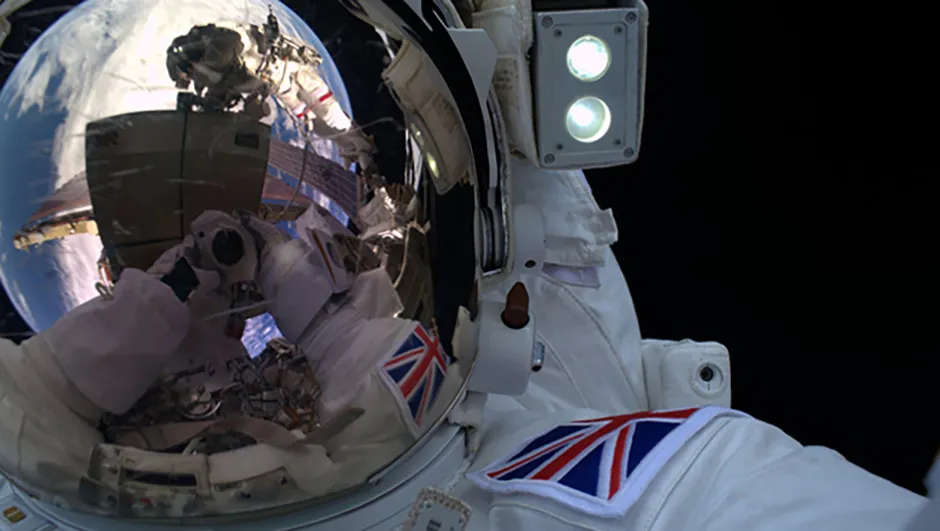On 18 June 2016, UK astronaut Tim Peake climbed into a Soyuz spacecraft and began his journey back to Earth, following six months on board the International Space Station for his Principia mission.
Peake made the journey along with NASA astronaut Tim Kopra and Soyuz spacecraft commander Yuri Malenchenko.
Peake's stay on the ISS was an eventful few months for the Chichester-born astronaut. Here are some of Tim Peake's most memorable moments on board the ISS.
1
Watching the 6 Nations from Earth’s orbit
The first British fixture of the 2016 6 Nations rugby tournament took place on 2 February, between England and Scotland, and Tim was only too pleased to don white and red in support of his home country.
Considering Tim's wife Rebecca is a native of Perthshire, perhaps he felt that travelling 27,600 km/h, 400km above Earth was the only safe way to do so!
2
Addressing Parliament
On 1 March 2016, Tim Peake became the first person to address the UK Parliament in zero gravity and the first committee witness to give evidence from space, as he took part in the Parliamentary Voice of the Future Event.
In this video message for the House of Commons, Peake revealed not just the importance of the science being conducted during his Principia mission, but also the significance of the ISS project as a whole, and how the UK can continue playing a pivotal role in its success.
3
Running the London Marathon
Cardio exercise is a big part of ISS astronauts’ routines, as muscle degradation is a real risk for those spending months at a time in zero gravity.
Not content with sticking to his planned fitness regime, Peake decided he would have a go at running the London Marathon on 24 April - albeit while flying 400km above the streets of the British capital.

The problems caused by running in a spacecraft without gravity are self evident, but astronauts get round this by harnessing themselves onto the treadmill via shoulder straps.
“When I got to 10 miles I realised that my legs were feeling OK but my shoulders were beginning to hurt, so I needed to finish the run quicker than planned,” Peake revealed in his blog.
But the UK astronaut wasn’t running solo: using a special app, Peake was able to digitally view the streets of London as if he was really there, putting him in the midst of the action along with 33,000 other runners.
4
Monkeying around
Astronauts may be highly trained scientists undertaking important research onboard a floating laboratory in challenging conditions, but they are human after all, which means plenty of scope for practical jokes.
In February 2016, Tim Peake found himself being chased around the ISS by his colleague, friend and NASA astronaut Scott Kelly, after Scott’s twin brother Mark sent up the costume as a present.
Much tomfoolery followed…
5
Blasting aliens from the ISS
In March, Peake and Kelly were tasked with trying out a new augmented reality device called Project Sidekick, which helps mission control get a better idea of what’s happening on the ISS.
It enables earthbound scientists to enter the virtual world inhabited by astronauts and carry out tasks in tandem.
This innovative, scientific and highly technical experiment was sidelined temporarily, however, after the pair discovered a virtual reality Space Invaders game and proceeded to spend the next few minutes blasting aliens.
NB: the ‘lasers’ in this video are special effects added to the raw footage by ESA!
6
Spacewalk selfie
In 2013, ‘selfie’ was announced as the Oxford Dictionaries Word of the Year, showing just how ubiquitous the practice of self-portrait photography has become in the digital age.

Twitter and Instagram users would struggle to top Tim Peake’s most famous otherworldly effort, however, captured during his 4 hour 43 minute spacewalk with Tim Kopra on 15 January.
"Today’s exhilarating spacewalk will be etched in my memory forever – quite an incredible feeling!" Tim later exclaimed on social media.
7
Rover control
Rovers and probes continue to carry out incredibly important research on the planets of our Solar System, accessing distant worlds currently beyond the reach of manned spaceflights.
The future of rover exploration could see astronauts travelling to a planet and controlling a rover on the surface of that planet from its orbit.
To test this method out, Peake was asked to take the helm of one such rover, navigating a ‘Martian landscape’ that was in fact a mock planetary surface built in a warehouse in Stevenage, UK.
BBC Sky at Night Magazine news editor Elizabeth Pearson travelled to Stevenage on the day to watch Peake’s rover in action, and captured this video of the machine pirouetting as it scanned the environs.
All image credits: ESA/NASA
